Discovering hidden caves on the remote southern shores of Africa
If you love the outdoors and being in nature then you will love hiking along the southern shores of the African continent. Remember that Africa is one of the largest land masses on the planet so there is an abundance of wide open space. And although much of Africa is too hot to be pleasant, this little strip along the southern coast where I’m exploring is just ideal.
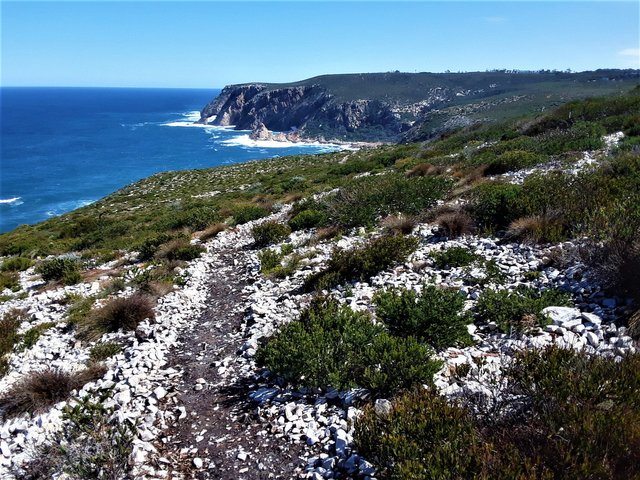
In this region called the Garden Route along the south coast of Africa, one can find some of the most epic outdoor activities available for the adventurous traveler. Hiking, mountain biking, zip-lining, kayaking and surfing are just some of the options available. I like hiking along the cliff tops overlooking the shoreline and surf below. Occasionally I’m able to find a path down the steep slopes to the shoreline and the remote rocky little bays and alcoves that dot the map all along this stretch of the massive coastline.
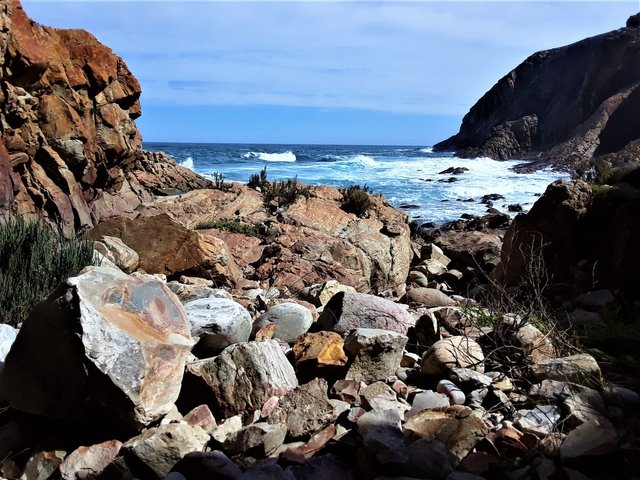
Or if I don’t see a path, then I occasionally simply climb down an old riverbed or dry waterfall path that remains carved out of the steep cliff face. This stretch of the shoreline is protected by nature conservation authorities as a “coastal corridor”, as they call it, to facilitate the wildlife in their movement along the shoreline. Human intervention via private building and property ownership is slowly encroaching on what was once wildlife terrain where buck would roam. The buck are still here, and sometimes I see their footprints. But mostly I see baboons in a troop that still roam around freely.
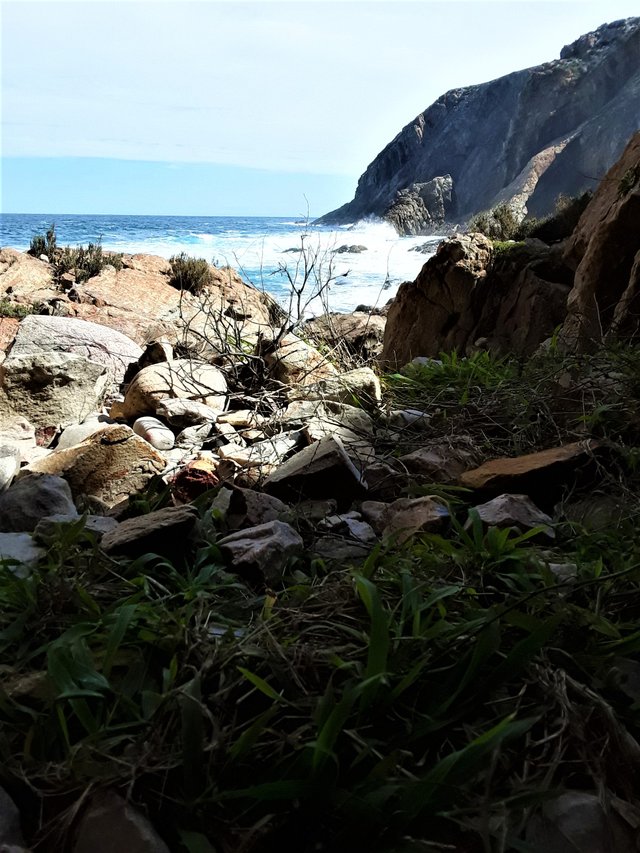
Once I’m down at the shoreline, I’m able to explore freely wherever it’s still possible to climb, which is only in places where the rocks and shoreline allow. Otherwise some places are simply inaccessible as there are no paths and you are left to your own climbing skills if you want to get anywhere.
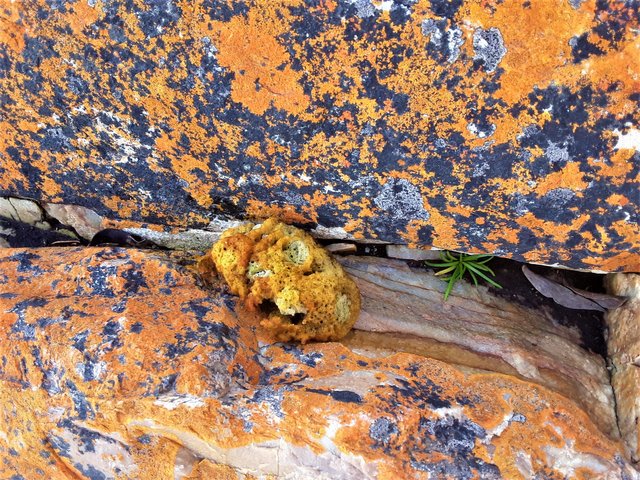
It’s possible to find all sorts of interesting natural phenomena. When we’re so habituated to have so much consumer goods available to us via the shops, it may initially seem quite bland along these shores that have zero human influence. However, once you acclimatise to the pure natural surroundings, it is possible to find some fascinating items lying around, like this sponge for example.
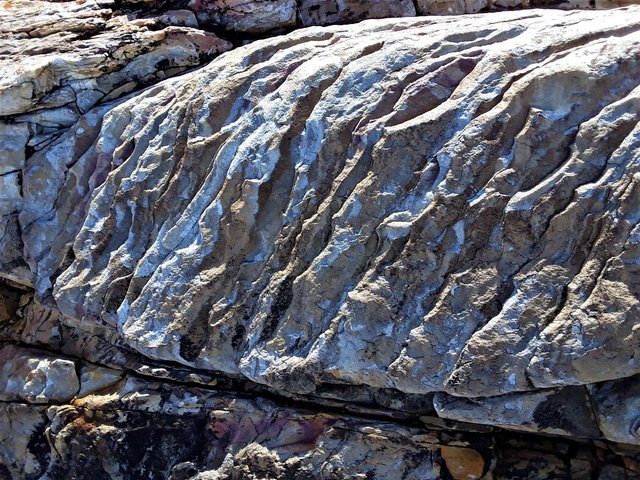
I also came across some very curious looking blue rocks. The actual rock itself appears to be a pale turquoise shade, which is very unusual and I have no idea what creates this pretty shade. I presume it’s the mineral content of the rock. It makes a distinct contrast to the vast majority of the rock which is covered in a contrasting ochre color. This burnt orange of ochre is apparently from the lichen that grow on top of the rock itself. I love the combination of these two contrasting colors.
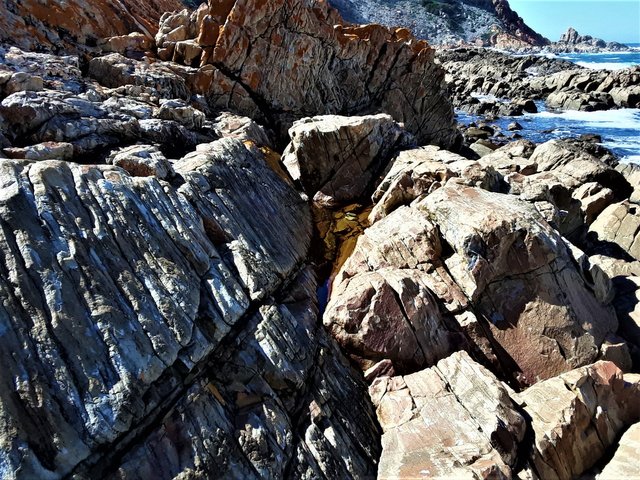
The burnt orange rock is prolific all along this shoreline but the pale turquoise shade is unique and extremely scarce. I only found it in one particular region so it remains an intriguing anomaly so add to the mysteries of my tour so far.
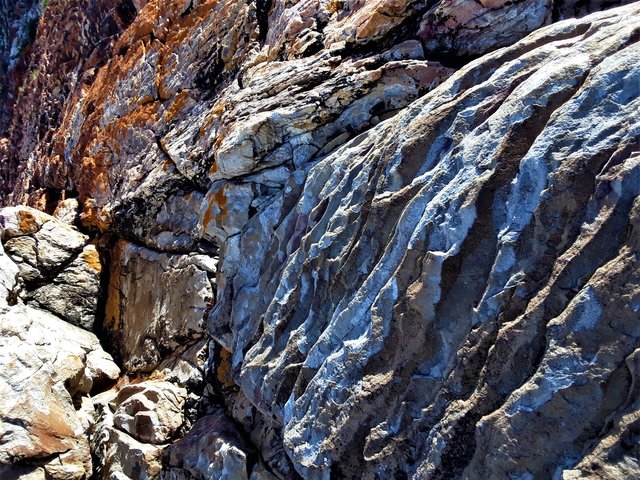
Some of my most fascinating discoveries are the occasional caves that dot the shoreline along this African south coast. They are usually small but this one today is one of the biggest I have encountered so far. One could easily shelter inside from any adverse weather conditions.
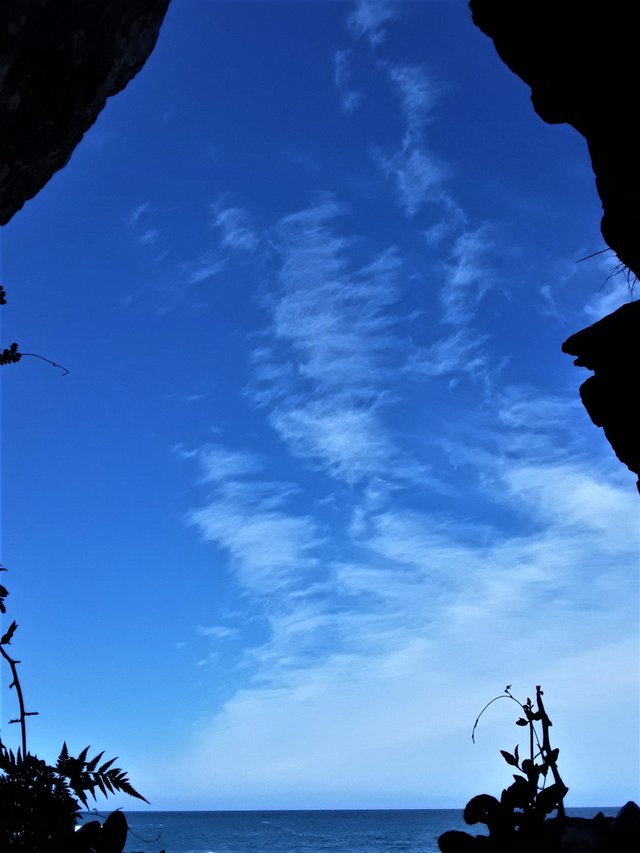
It’s tricky trying to capture the overall impression on camera as the structures are big and also the light and dark areas make a stark contrast for my little phone camera to detect clearly. Nevertheless, I am attempting to capture the scenes and share them here with you.
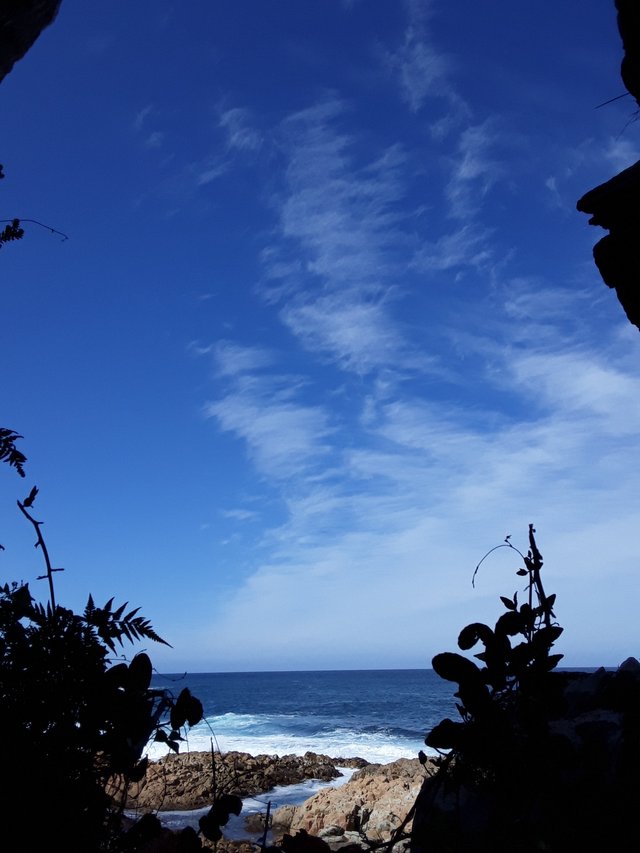
Deep inside today’s cave, I came across some ground water seeping from the roof top and down the wall. It looks like the underground spring water emerges here inside this cave at the sea level on the shoreline. What an awesome discovery! I have found a fully protective cave that also has its own running water.
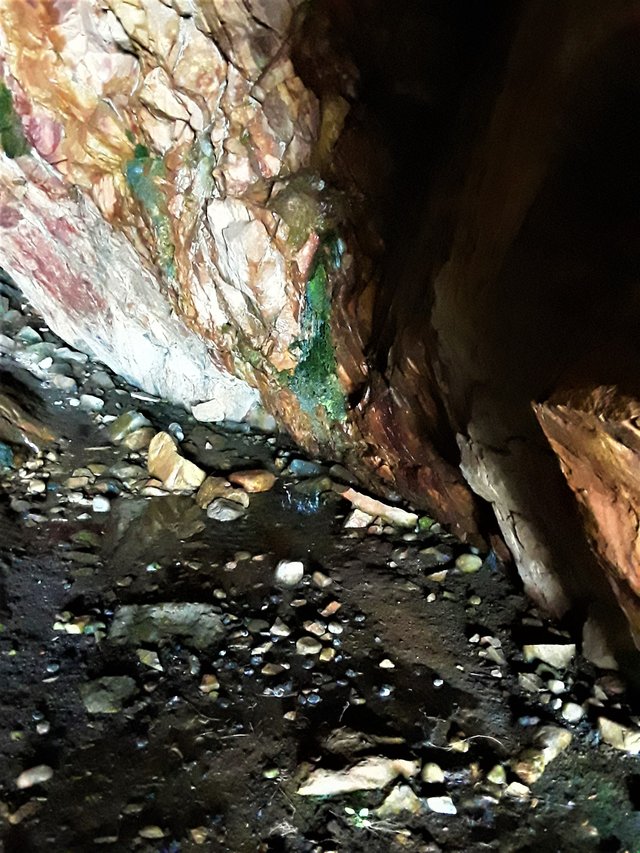
I presume this spring water dripping from the cave rooftop is only present during the rainier seasons of the year, when there is plenty of water accumulating on the ground way up on the cliff tops above. Ancient hunter/gatherer nomadic Bushmen tribes called the Khoi or San, would have found this place very hospitable in previous centuries I presume.
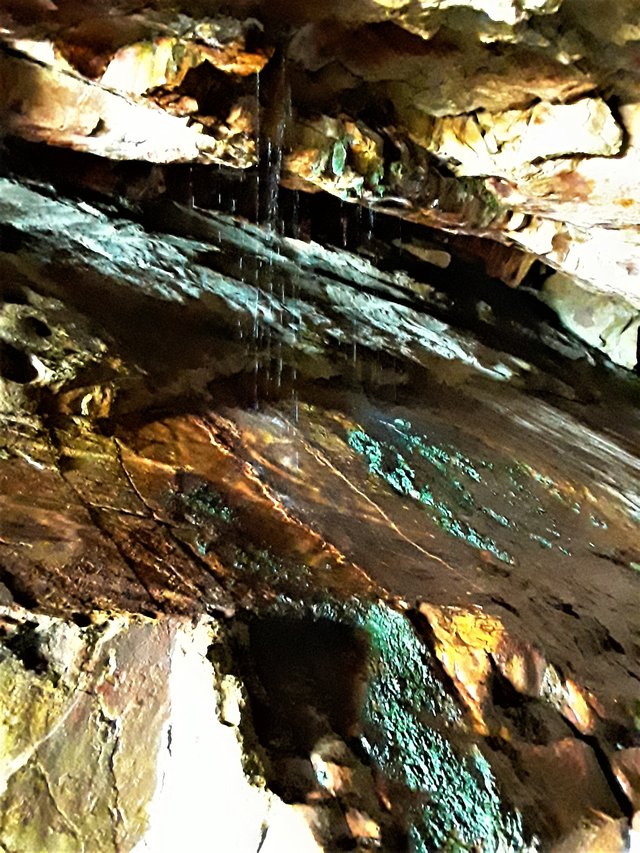
If you look closely at the photo below, you can see the water dripping from the cave roof onto the floor, with the wet glistening rock visible. The cave mouth is wide and high enough to walk through with ease.
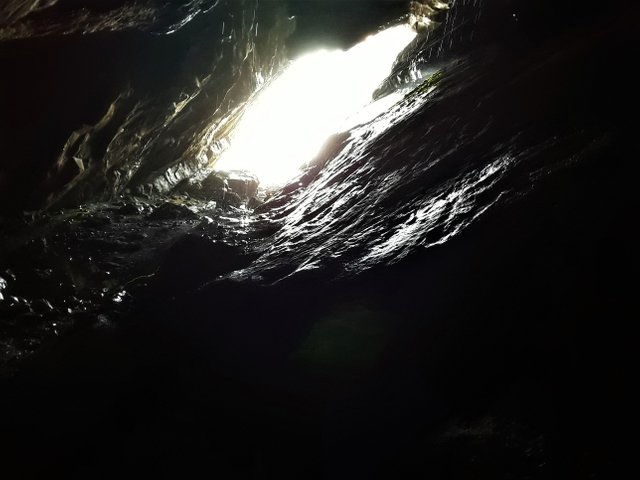
I have not found any artefacts from the original indigenous tribes of Khoi/San bushmen that used to roam here but I did come across a more recent remains of what looks like a fire made by some local fishermen. It looks like they were subsistence foragers who picked shells and muscles off the rocks and then cooked them in the coals of the little fire. So it looks as if one could survive here with relative ease if you are able to live off sea creatures and rain water, for a short period of time.
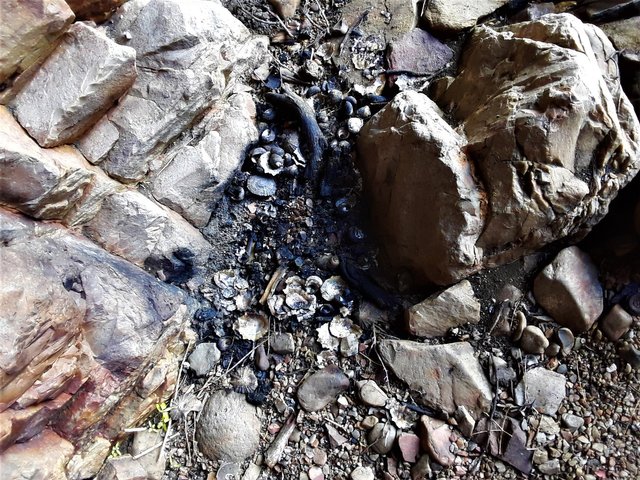
I hope you have enjoyed my little tour of the coastline here at the southernmost shores of Africa. Please feel inspired to make a journey here when you can and come see the place for yourself. Let me know when you’re in the area and I will be happy to meet you and show you these lesser known regions of the Western Cape province and Garden Route, as it’s called here in sunny South Africa.
(photos my own)
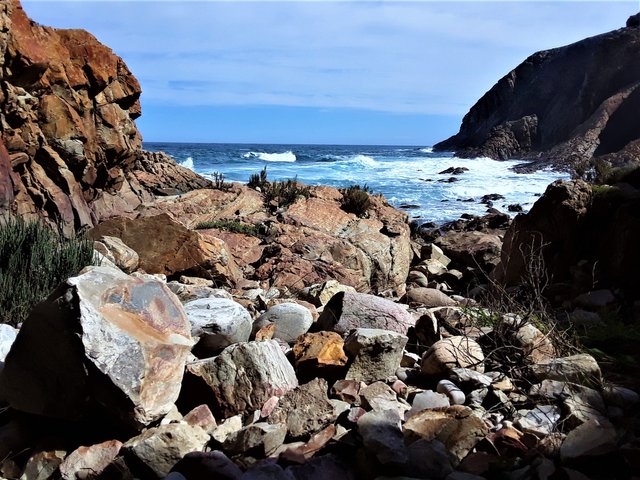
@tipu curate
Very nice post
Upvoted 👌 (Mana: 2/6) Get profit votes with @tipU :)
Congratulations @julianhorack! You received the biggest smile and some love from TravelFeed! Keep up the amazing blog. 😍 Your post was also chosen as top pick of the day and is now featured on the TravelFeed.io front page.
Thanks for using TravelFeed!
@smeralda (TravelFeed team)
PS: You can now search for your travels on-the-go with our Android App. Download it on Google Play